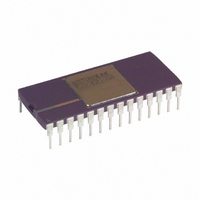AD676BD Analog Devices Inc, AD676BD Datasheet - Page 10

AD676BD
Manufacturer Part Number
AD676BD
Description
ADC Single SAR 100KSPS 16-Bit Parallel 28-Pin SBCDIP
Manufacturer
Analog Devices Inc
Datasheet
1.AD676JNZ.pdf
(16 pages)
Specifications of AD676BD
Package
28SBCDIP
Resolution
16 Bit
Sampling Rate
100 KSPS
Architecture
SAR
Number Of Analog Inputs
1
Digital Interface Type
Parallel
Input Type
Voltage
Polarity Of Input Voltage
Bipolar
Rohs Status
RoHS non-compliant
Number Of Bits
16
Sampling Rate (per Second)
100k
Data Interface
Parallel
Number Of Converters
2
Power Dissipation (max)
480mW
Voltage Supply Source
Analog and Digital, Dual ±
Operating Temperature
-40°C ~ 85°C
Mounting Type
Through Hole
Package / Case
28-CDIP (0.600", 15.24mm)
For Use With
AD676-EB - BOARD EVAL SAMPLING ADC AD676
Lead Free Status / RoHS Status
Available stocks
Company
Part Number
Manufacturer
Quantity
Price
Part Number:
AD676BD
Manufacturer:
ADI/亚德诺
Quantity:
20 000
AD676
POWER SUPPLIES AND DECOUPLING
The AD676 has three power supply input pins. V
provide the supply voltages to operate the analog portions of the
AD676 including the ADC and sample-hold amplifier (SHA).
V
tions of the AD676 including the data output buffers and the
autocalibration controller.
As with most high performance linear circuits, changes in the
power supplies can produce undesired changes in the perfor-
mance of the circuit. Optimally, well regulated power supplies
with less than 1% ripple should be selected. The ac output im-
pedance of a power supply is a complex function of frequency,
and in general will increase with frequency. In other words, high
frequency switching such as that encountered with digital cir-
cuitry requires fast transient currents which most power supplies
cannot adequately provide. This results in voltage spikes on the
supplies. If these spikes exceed the 5% tolerance of the 12 V
supplies or the 10% limits of the +5 V supply, ADC perfor-
mance will degrade. Additionally, spikes at frequencies higher
than 100 kHz will also degrade performance. To compensate for
the finite ac output impedance of the supplies, it is necessary to
store “reserves” of charge in bypass capacitors. These capacitors
can effectively lower the ac impedance presented to the AD676
power inputs which in turn will significantly reduce the magni-
tude of the voltage spikes. For bypassing to be effective, certain
guidelines should be followed. Decoupling capacitors, typically
0.1 F, should be placed as closely as possible to each power
supply pin of the AD676. It is essential that these capacitors be
placed physically close to the IC to minimize the inductance of
the PCB trace between the capacitor and the supply pin. The
logic supply (V
the analog supplies (Vcc and V
erence input is also considered as a power supply pin in this re-
gard and the same decoupling procedures apply. These points
are displayed in Figure 4.
DD
provides the supply voltage which operates the digital por-
Figure 4. Grounding and Decoupling the AD676
+5V
0.1 F
DD
) should be decoupled to digital common and
18
V
COMMON
DD
SYSTEM
DIGITAL
DGND
11
COMMON
ANALOG
SYSTEM
EE
AGND
) to analog common. The ref-
13
AD676
0.1 F
0.1 F
12V –12V
V
12
CC
V
17
EE
0.1 F
CC
V
REF
11
and V
EE
–10–
Additionally, it is beneficial to have large capacitors (>47 F)
located at the point where the power connects to the PCB with
10 F capacitors located in the vicinity of the ADC to further
reduce low frequency ripple. In systems that will be subjected to
particularly harsh environmental noise, additional decoupling
may be necessary. RC-filtering on each power supply combined
with dedicated voltage regulation can substantially decrease
power supply ripple effects (this is further detailed in Figure 7).
BOARD LAYOUT
Designing with high resolution data converters requires careful
attention to board layout. Trace impedance is a significant issue.
A 1.22 mA current through a 0.5
drop of 0.6 mV, which is 4 LSBs at the 16-bit level for a 10 V
full-scale span. In addition to ground drops, inductive and ca-
pacitive coupling need to be considered, especially when high
accuracy analog signals share the same board with digital
signals.
Analog and digital signals should not share a common return
path. Each signal should have an appropriate analog or digital
return routed close to it. Using this approach, signal loops en-
close a small area, minimizing the inductive coupling of noise.
Wide PC tracks, large gauge wire, and ground planes are highly
recommended to provide low impedance signal paths. Separate
analog and digital ground planes are also desirable, with a single
interconnection point at the AD676 to minimize interference
between analog and digital circuitry. Analog signals should be
routed as far as possible from digital signals and should cross
them, if at all, only at right angles. A solid analog ground plane
around the AD676 will isolate it from large switching ground
currents. For these reasons, the use of wire wrap circuit con-
struction will not provide adequate performance; careful printed
circuit board construction is preferred.
GROUNDING
The AD676 has three grounding pins, designated ANALOG
GROUND (AGND), DIGITAL GROUND (DGND) and
ANALOG GROUND SENSE (AGND SENSE). The analog
ground pin is the “high quality” ground reference point for the
device, and should be connected to the analog common point in
the system.
AGND SENSE is intended to be connected to the input signal
ground reference point. This allows for slight differences in level
between the analog ground point in the system and the input
signal ground point. However no more than 100 mV is recom-
mended between the AGND and the AGND SENSE pins for
specified performance.
trace will develop a voltage
REV. A













